The consensus expects nonfarm payrolls for September to come in at 50,000, and I think that is too pessimistic. The charts below with incoming daily and weekly data for September show that:
1) Trade policy uncertainty is improving
2) Economic policy uncertainty is improving
3) Consumer expectations to business conditions are improving
4) Consumers are less worried about losing their jobs
5) Corporate capex plans are improving, and jobless claims are still low
6) The daily TSA data for the number of people traveling on airplanes is strong
7) Data for the number of people going to Broadway shows, the movies and visiting the Statue of Liberty is strong
8) Weekly data for same-store retail sales is strong
9) Weekly data for bank lending is accelerating
10) Weekly bankruptcy filings are starting to trend lower
11) Weekly data for business formation is still strong
12) There are significant upside risks to inflation in the regional Fed surveys and in ISM services price paid
Combined with the Atlanta Fed expecting GDP growth in the third quarter at 3.9%, the bottom line is that the economy continues to do better than the consensus expects, and the labor market has likely weakened because of lower immigration and perhaps also AI implementation.
With continued strong growth and upside pressures on inflation from tariffs, immigration restrictions, and the declining dollar, the FOMC should really be talking about rate hikes rather than rate cuts.
Our chart book with high-frequency indicators for the US economy is available here.
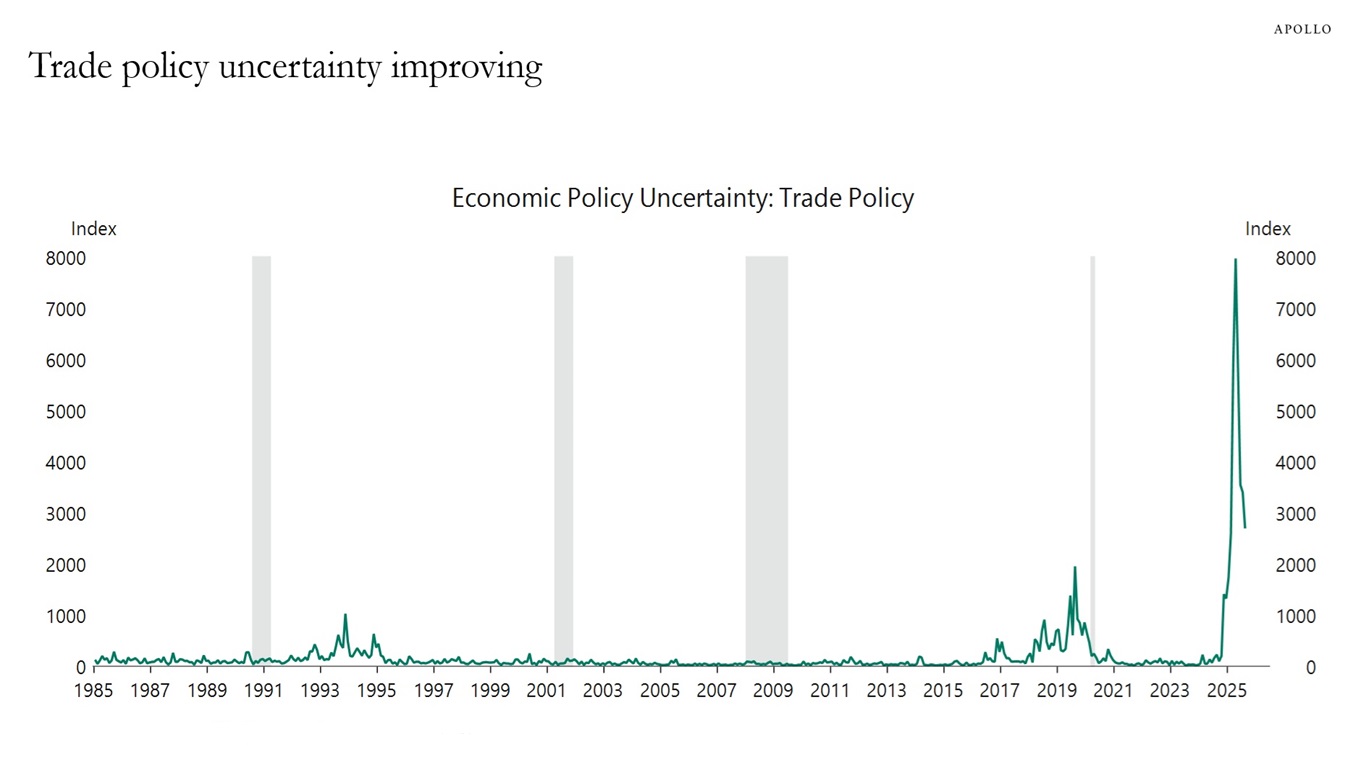 Sources: Economic Policy Uncertainty, Macrobond, Apollo Chief Economist
Sources: Economic Policy Uncertainty, Macrobond, Apollo Chief Economist
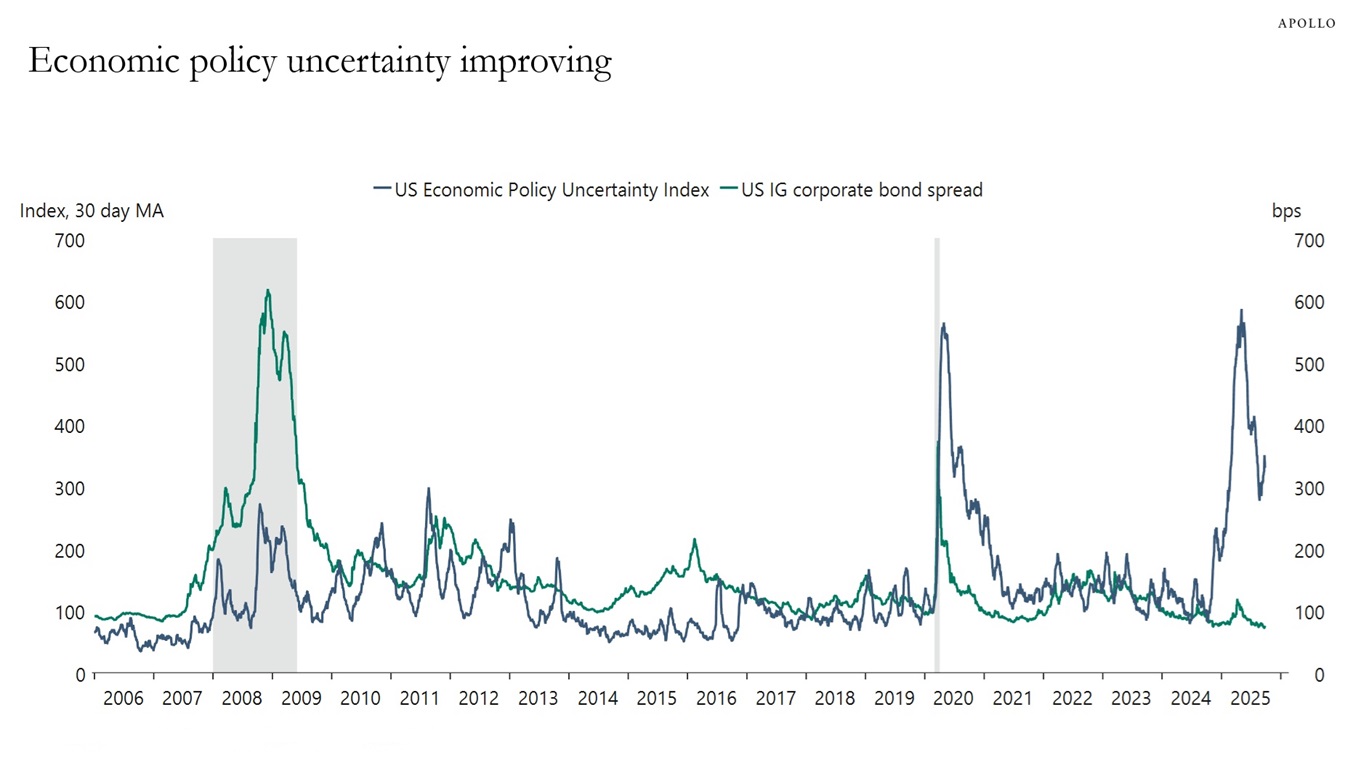 Sources: Economic Policy Uncertainty, Macrobond, Apollo Chief Economist
Sources: Economic Policy Uncertainty, Macrobond, Apollo Chief Economist
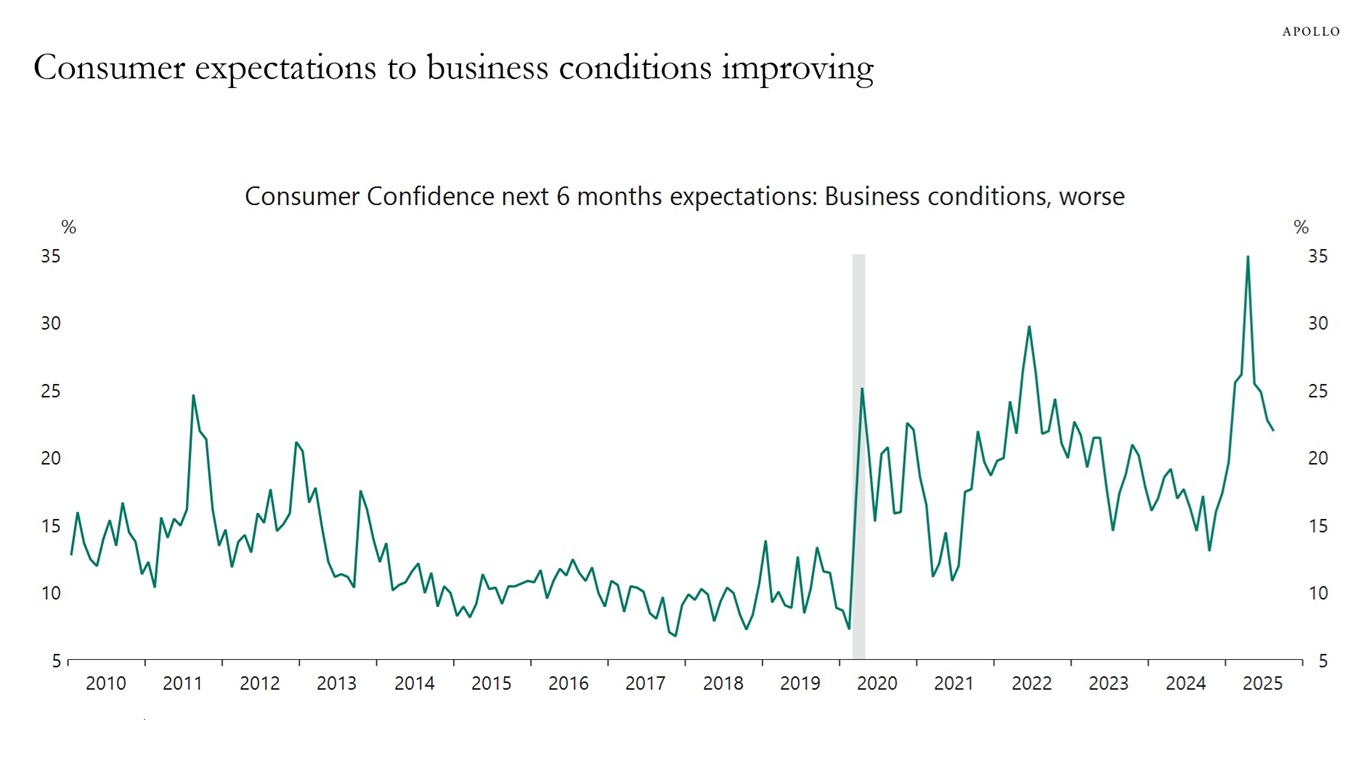 Sources: Conference Board, Macrobond, Apollo Chief Economist
Sources: Conference Board, Macrobond, Apollo Chief Economist
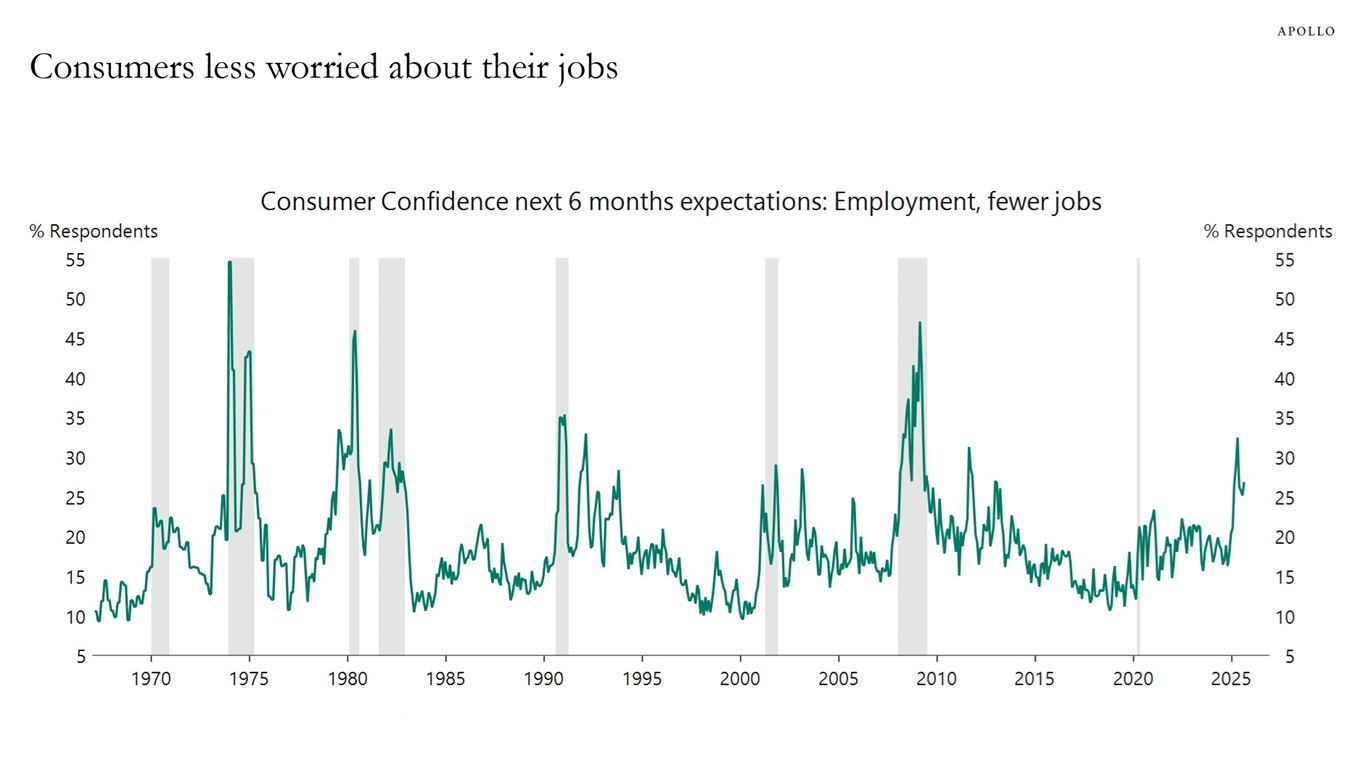 Sources: Conference Board, Macrobond, Apollo Chief Economist
Sources: Conference Board, Macrobond, Apollo Chief Economist
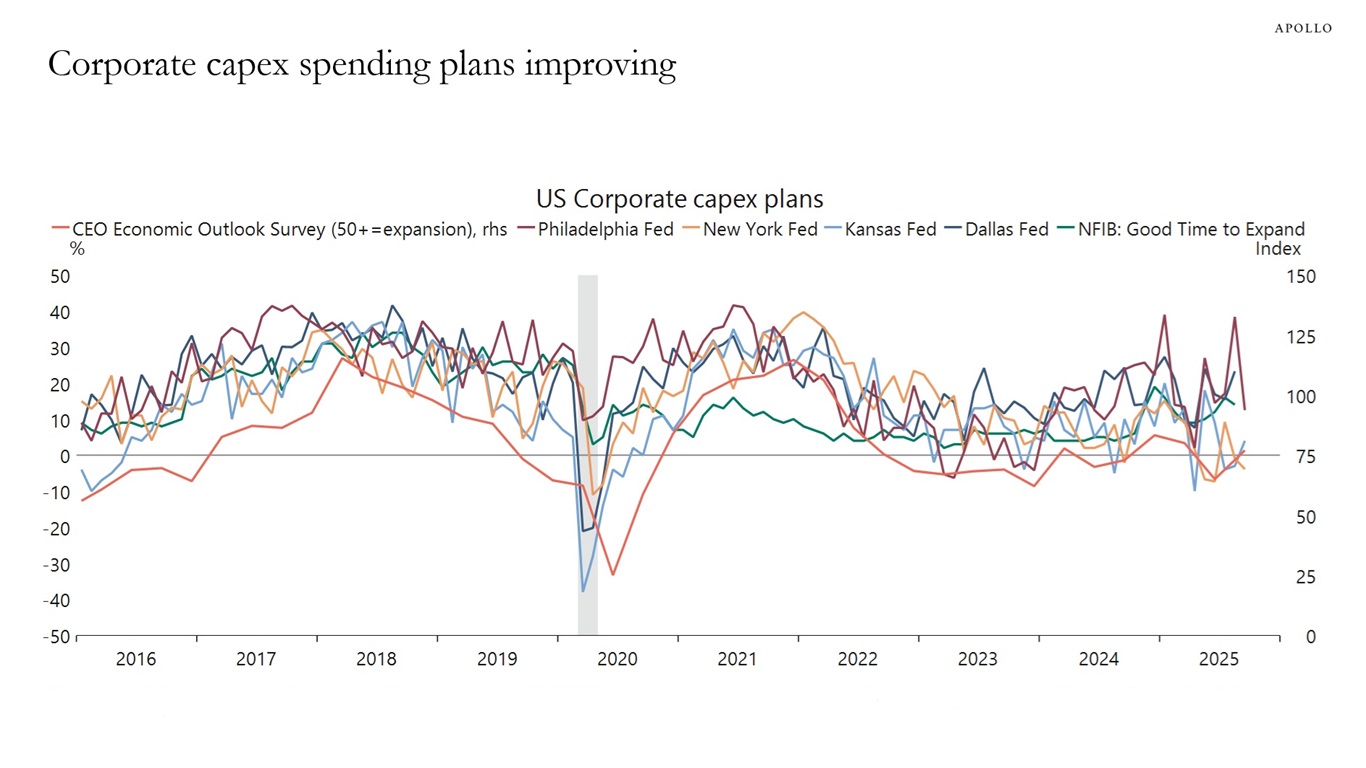 Sources: National Federation of Independent Business, Federal Reserve Bank of Dallas, Federal Reserve Bank of Kansas City, Federal Reserve Bank of New York, Federal Reserve Bank of Philadelphia, Business Roundtable, Macrobond, Apollo Chief Economist
Sources: National Federation of Independent Business, Federal Reserve Bank of Dallas, Federal Reserve Bank of Kansas City, Federal Reserve Bank of New York, Federal Reserve Bank of Philadelphia, Business Roundtable, Macrobond, Apollo Chief Economist
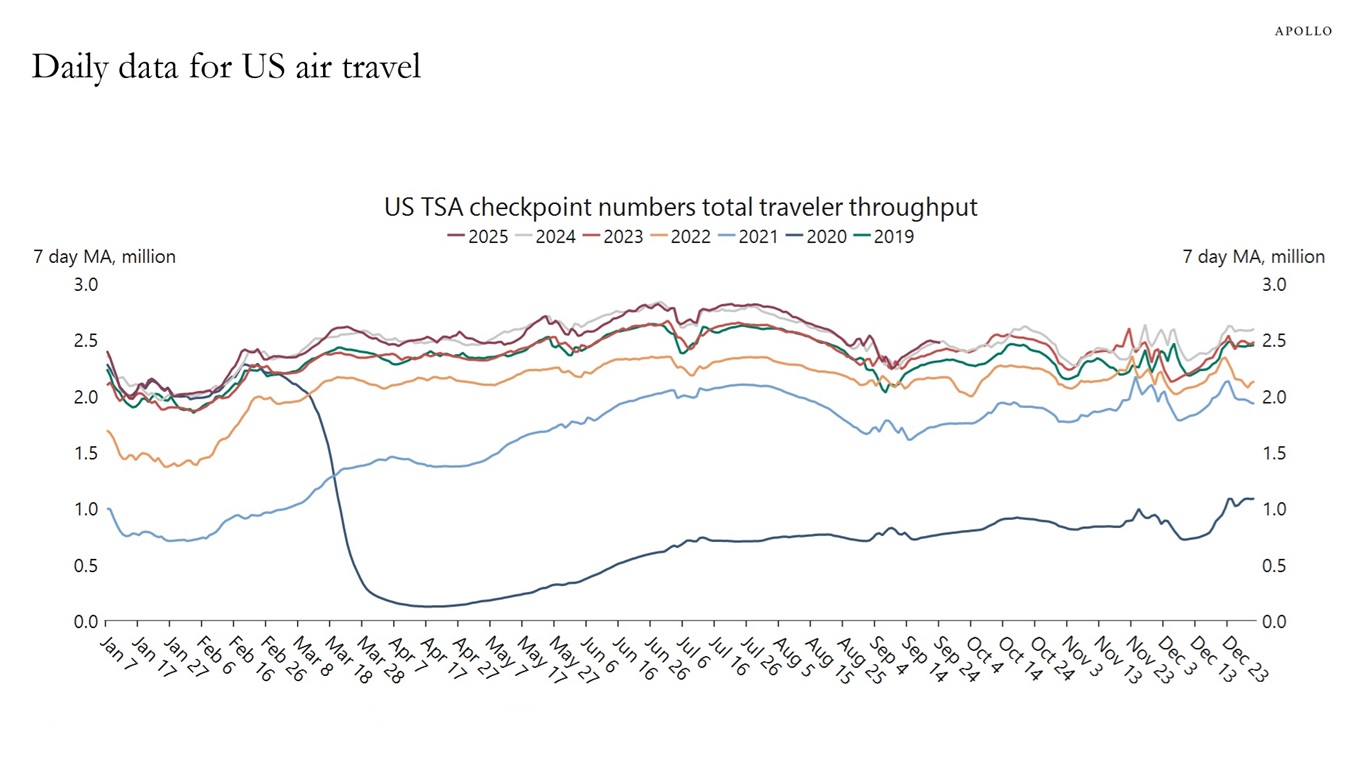 Sources: US Dept of Homeland Security, Macrobond, Apollo Chief Economist
Sources: US Dept of Homeland Security, Macrobond, Apollo Chief Economist
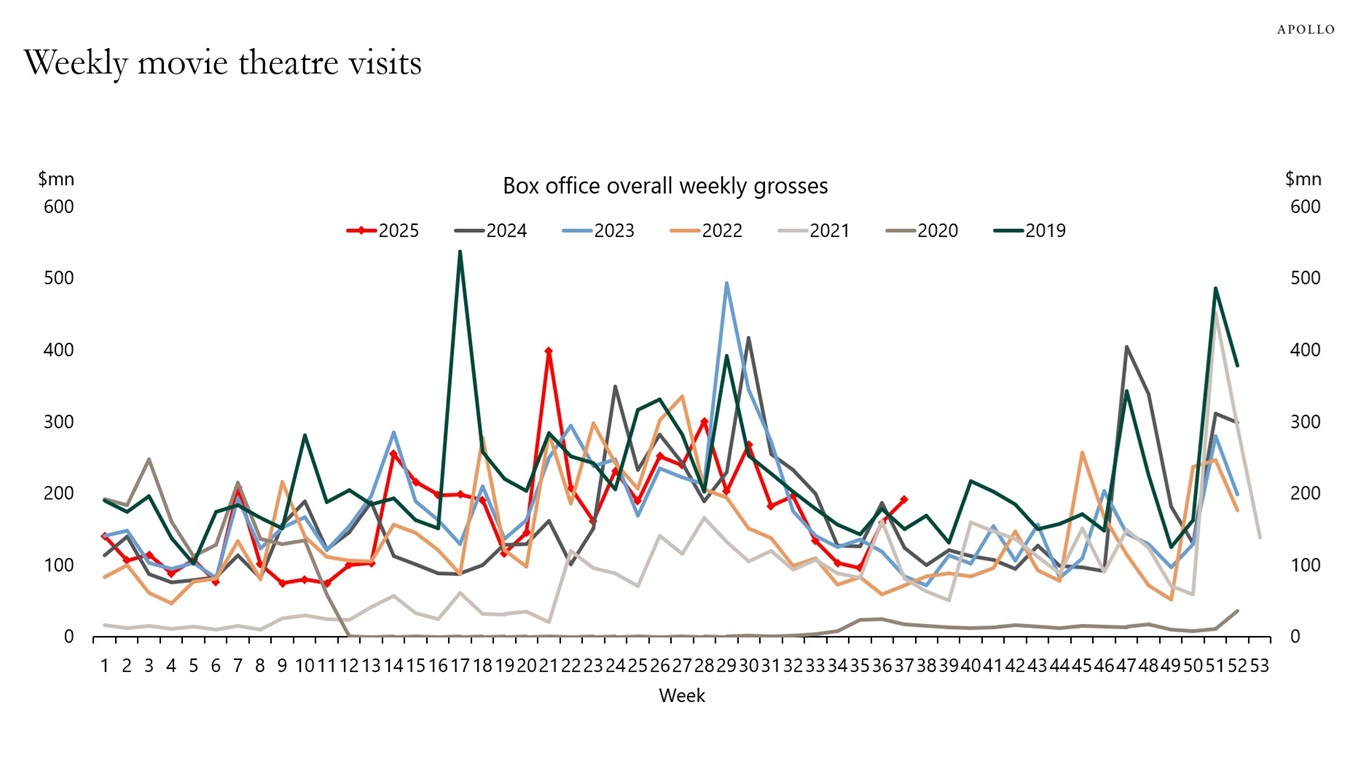 Sources: Boxofficemojo.com, Apollo Chief Economist
Sources: Boxofficemojo.com, Apollo Chief Economist
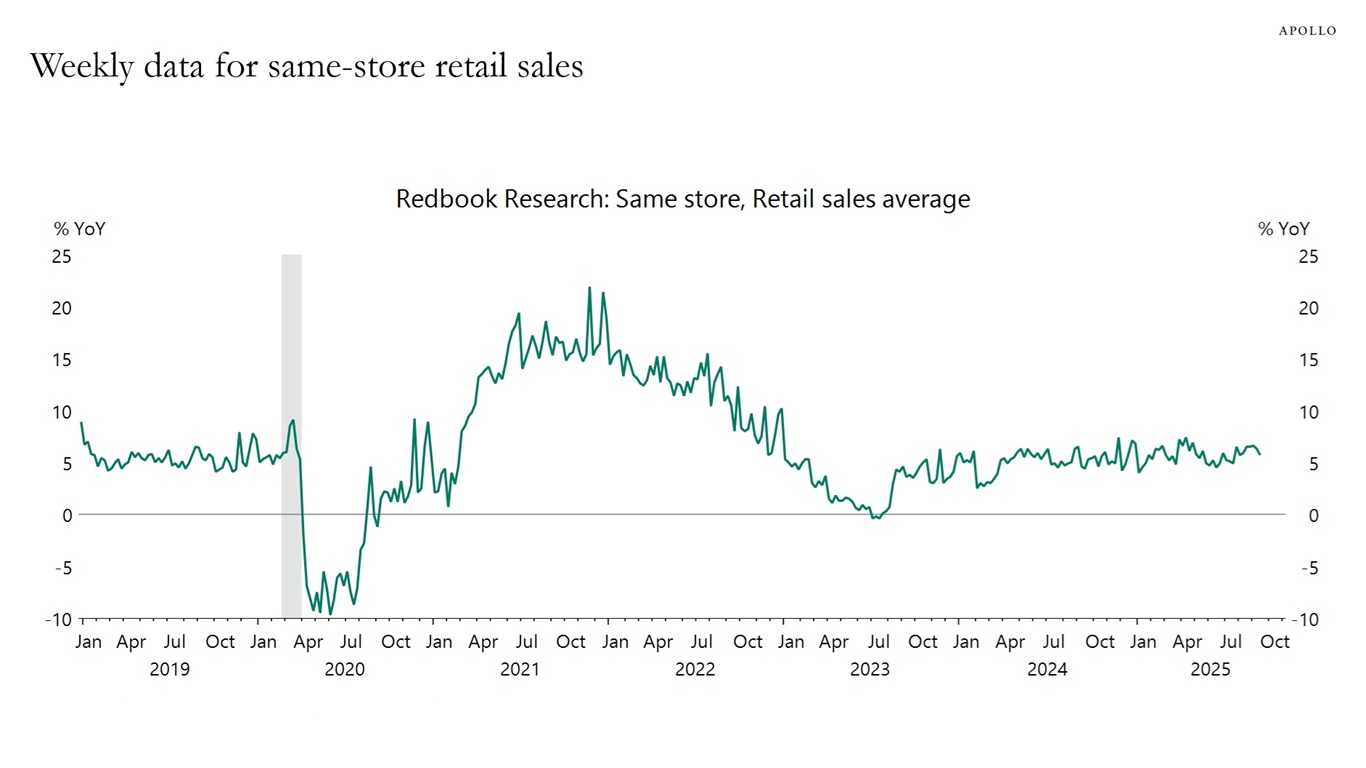 Sources: Redbook Research Inc., Macrobond, Apollo Chief Economist
Sources: Redbook Research Inc., Macrobond, Apollo Chief Economist
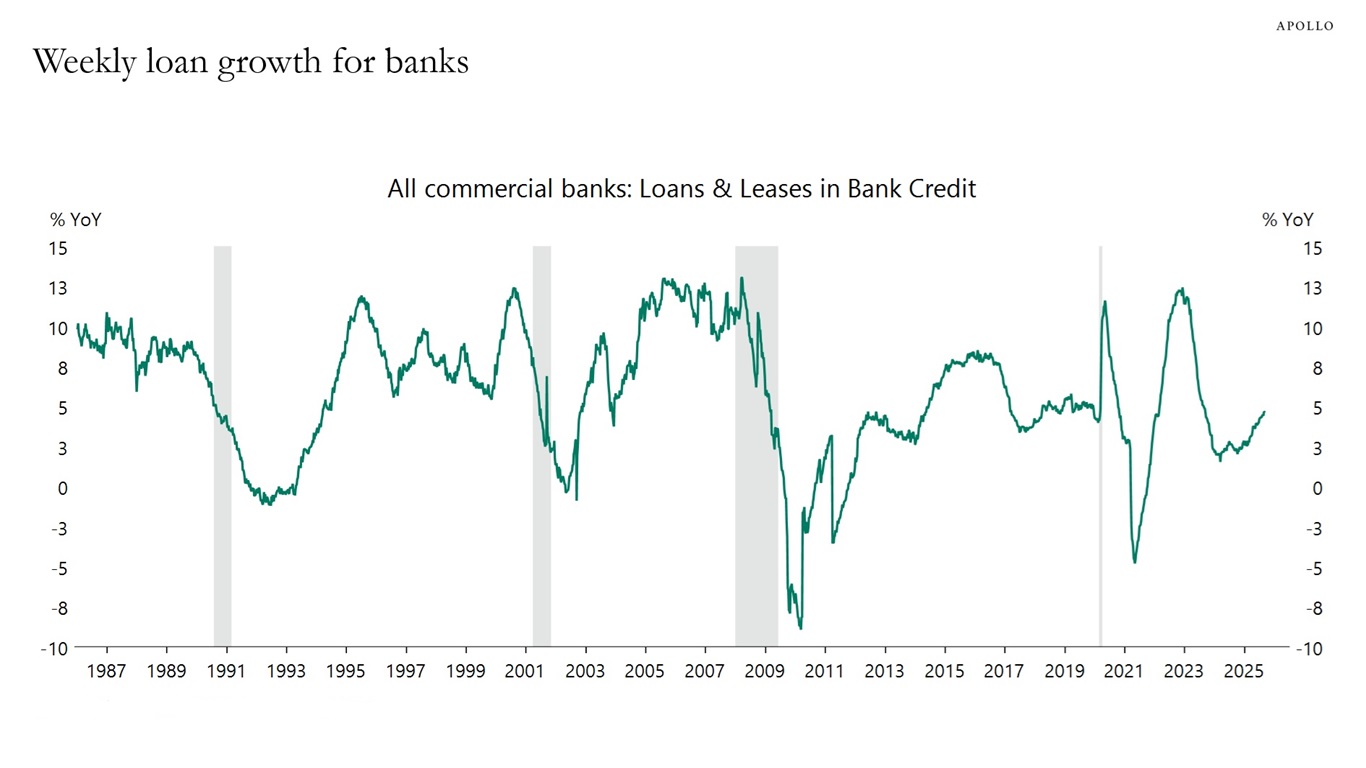 Sources: Federal Reserve, Macrobond, Apollo Chief Economist
Sources: Federal Reserve, Macrobond, Apollo Chief Economist
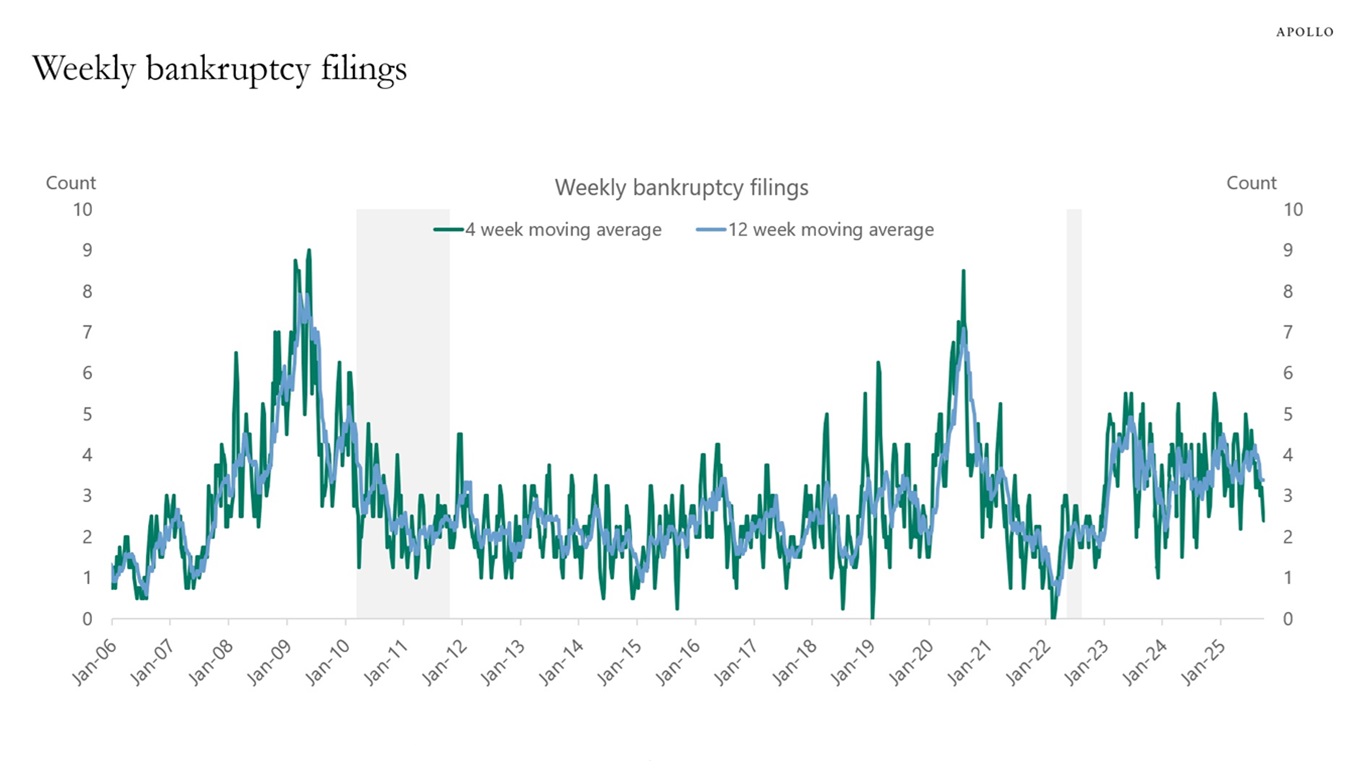 Note: Filings are for companies with more than $50 million in liabilities. For week ending on September 26, 2025. Sources: Bloomberg, Apollo Chief Economist
Note: Filings are for companies with more than $50 million in liabilities. For week ending on September 26, 2025. Sources: Bloomberg, Apollo Chief Economist
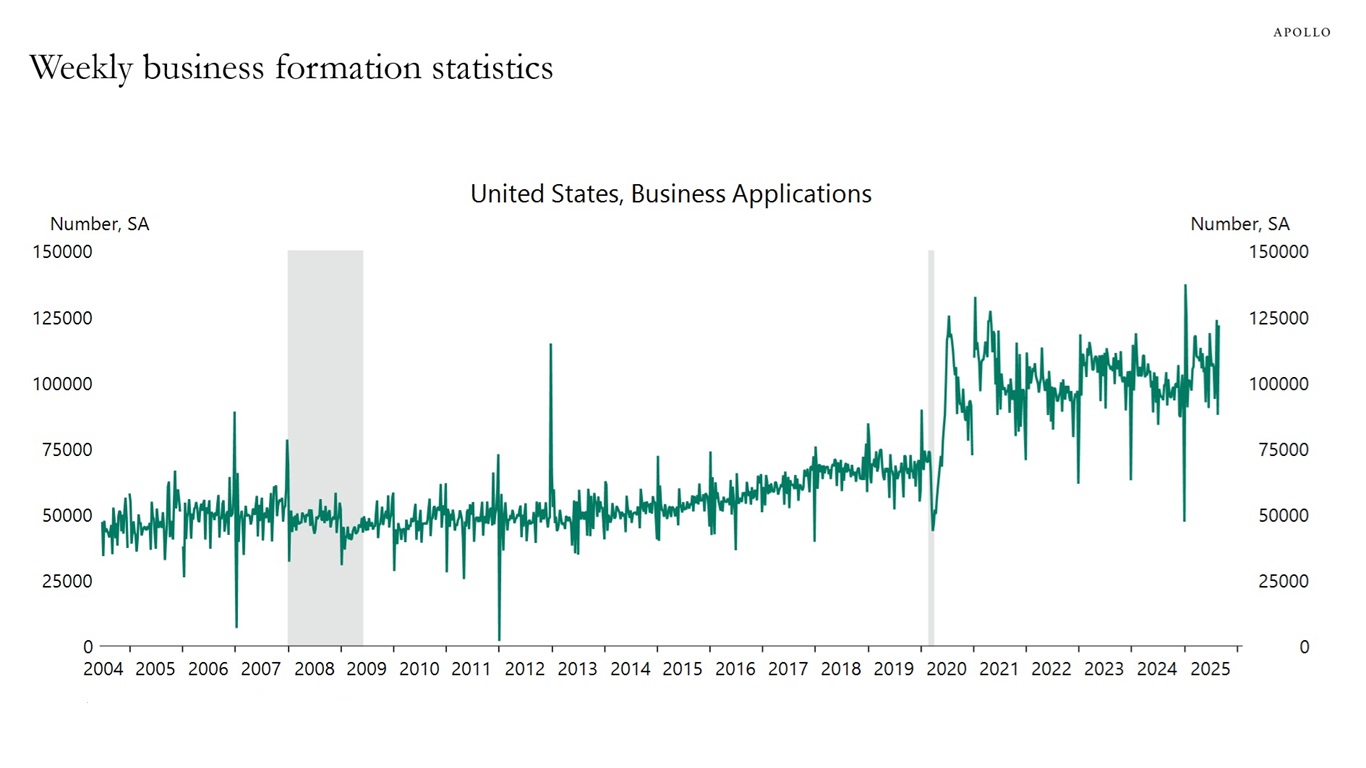 Sources: US Census Bureau, Macrobond, Apollo Chief Economist
Sources: US Census Bureau, Macrobond, Apollo Chief Economist
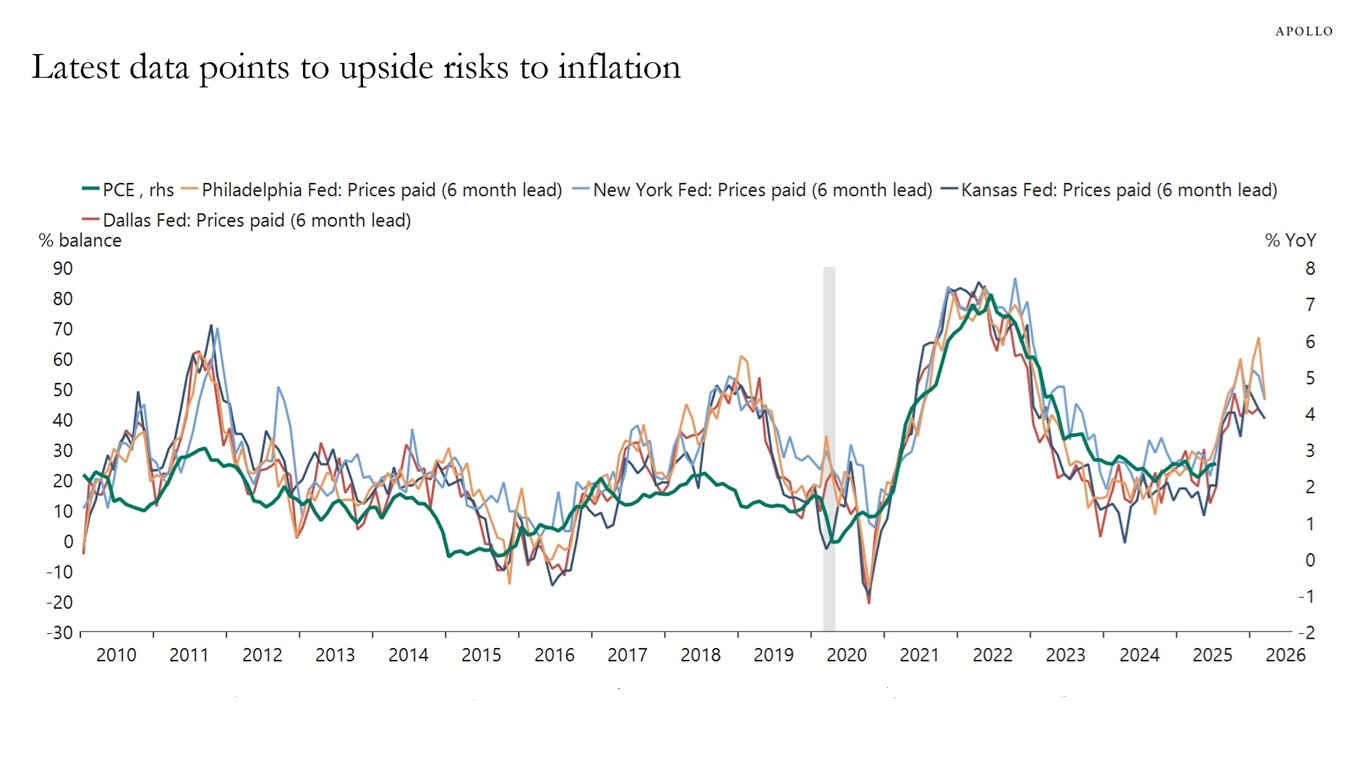 Sources: Federal Reserve Bank of Dallas, Federal Reserve Bank of Kansas City, Federal Reserve Bank of New York, Federal Reserve Bank of Philadelphia, US Bureau of Economic Analysis (BEA), Macrobond, Apollo Chief Economist
Sources: Federal Reserve Bank of Dallas, Federal Reserve Bank of Kansas City, Federal Reserve Bank of New York, Federal Reserve Bank of Philadelphia, US Bureau of Economic Analysis (BEA), Macrobond, Apollo Chief Economist